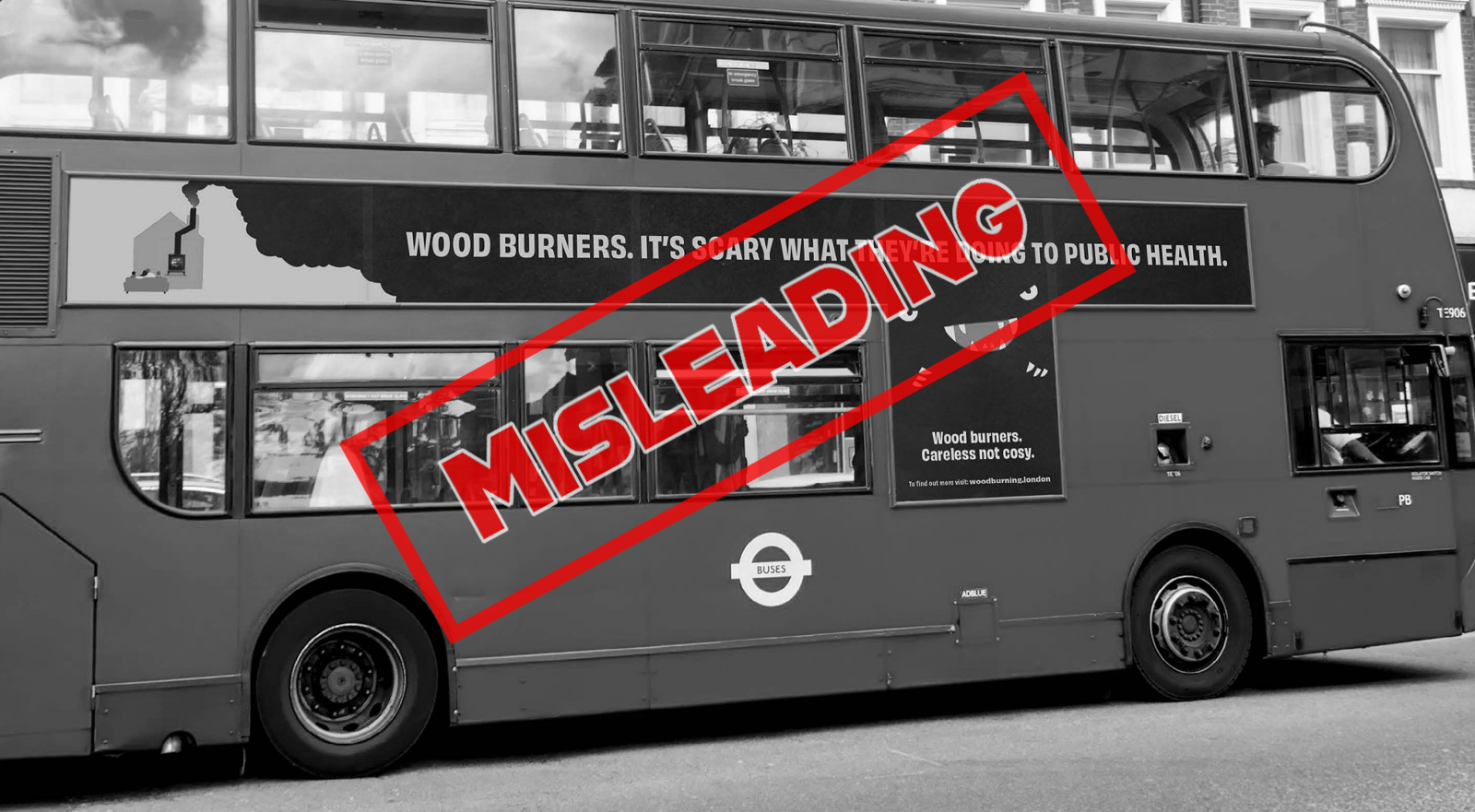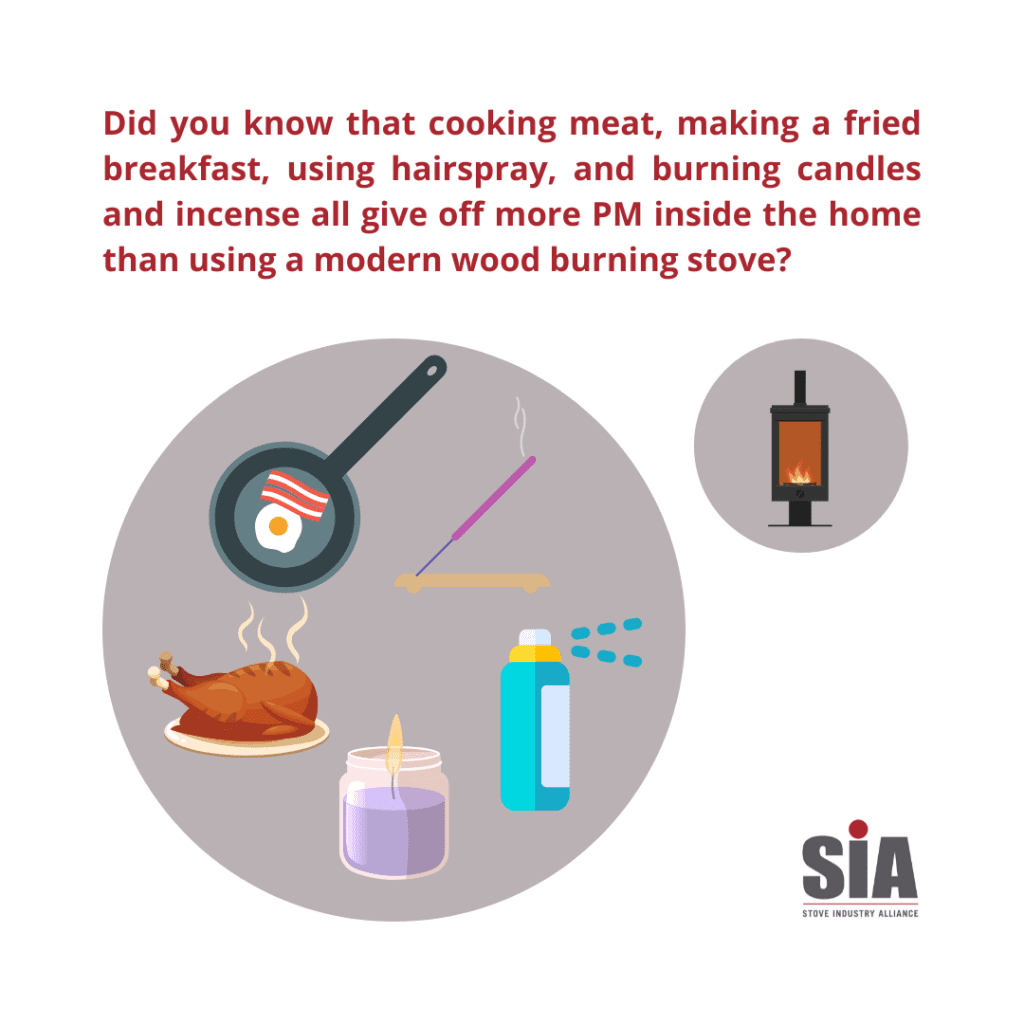We don’t enjoy having to react to media sensationalism, however, there are times when it feels important to set the record straight. A negative narrative is being unfairly manufactured around the wood-burning stove industry, by anti-woodburning groups such as the ‘London Wood Burning Project’ and ‘Clean Air Hub’. Their campaigns repeatedly use misleading claims and stats to scare the public and they refuse to answer questions directly when challenged.
Therefore, we feel it is a duty to set the record straight, so people don’t succumb to the haze of misleading information out there. In this blog, we will shed light on some of the flawed data and unfair generalisations anti-woodburning groups are using.
What do they mean by wood-burner?
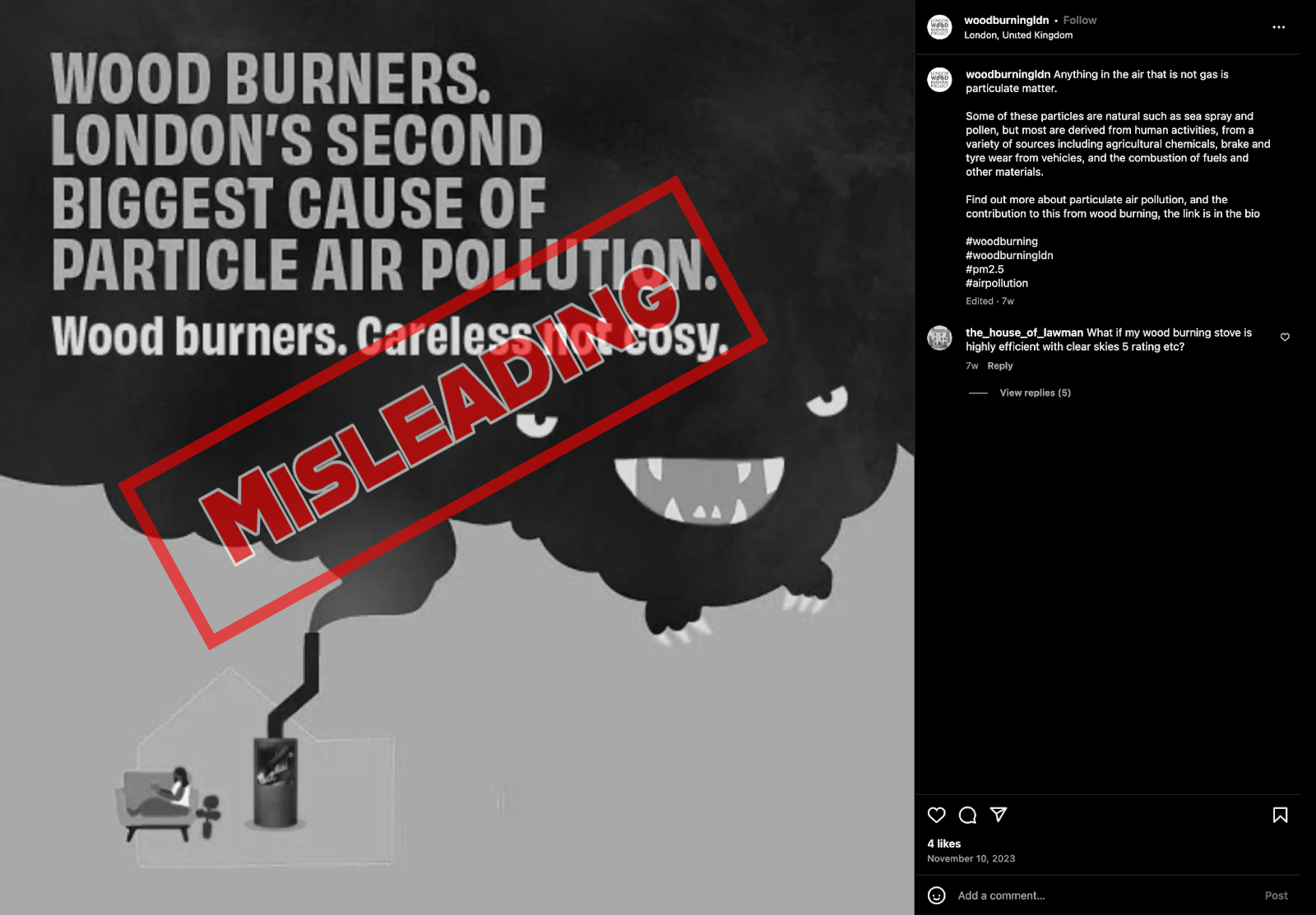
The campaigns paint a distorted picture, often using anxiety-inducing imagery and negative attention-grabbing headlines based on sweeping generalisations and weak or inaccurate data. They continue to mislead the public using stats that lump modern wood-burning stoves in with outdated, inefficient models, open fires and bonfires. It’s like saying cyclists are equally to blame for traffic congestion/emissions as lorries and private cars just because they all use wheels!
They combine emission sources for a more impactful number, and then claim 17% of London’s emissions come from ‘domestic wood burning’ or ‘wood burners’. Catch-all terms the public understandably associate most readily with wood-burning stoves – especially because they create ad campaigns which prominently feature images of wood stoves. However, the actual contribution of modern wood-burning stoves is estimated by the UK government’s official figures at just 1-2%! (1)
Differentiating between wood-burning practices is vital for progress
 Firefly London points out: “The irony of the billboard placement is that London’s tube network has appalling air quality, with PM 2.5 readings peaking at 600-700 ug/m3 – that’s 100 TIMES MORE PARTICULATES than an average London street…”
Firefly London points out: “The irony of the billboard placement is that London’s tube network has appalling air quality, with PM 2.5 readings peaking at 600-700 ug/m3 – that’s 100 TIMES MORE PARTICULATES than an average London street…”
It is essential to differentiate between various forms of wood-burning. Chief Medical Advisor Chris Whitty in his report acknowledges this saying, “For air pollution emissions, there is substantial difference between the different open fire and stove designs, the age of the appliance and how well maintained it is, and the moisture content of the wood, for those who want to burn wood.”(2)
While Ecodesign-compliant stoves are up to 90% more efficient than an open fire, ClearSkies Level 5 stoves, are even better still. They surpass Ecodesign standards, offering a further reduction in emissions by up to 30%! (3)
This is where the anti-woodburning strategy is so incredibly counterproductive. In London 70% of wood burning still occurs on open fires. (4) If people were widely encouraged to switch to one of the many modern and efficient wood-burning stoves available, it would massively reduce urban PM 2.5 emissions. Just think, the emissions of 70% of London Wood burning could be reduced by 90%!
Modern wood-burning stoves could help London reduce open-fire emissions by 90% !
PM 2.5 comes from such a wide array of natural and man-made sources that a zero-emission world is impossible! The best we can do is reduce them as much as possible while maintaining our ability to heat our homes. That is exactly what modern wood-burning stoves help achieve.
If improvements were what the anti-woodburning brigade was truly after, it doesn’t make sense to ignore the vast advancements in clean-burn technology now defining modern wood-burning stove heating. They are the ones being ‘careless’.
PM 2.5 perspective: How stoves can HELP improve indoor air quality
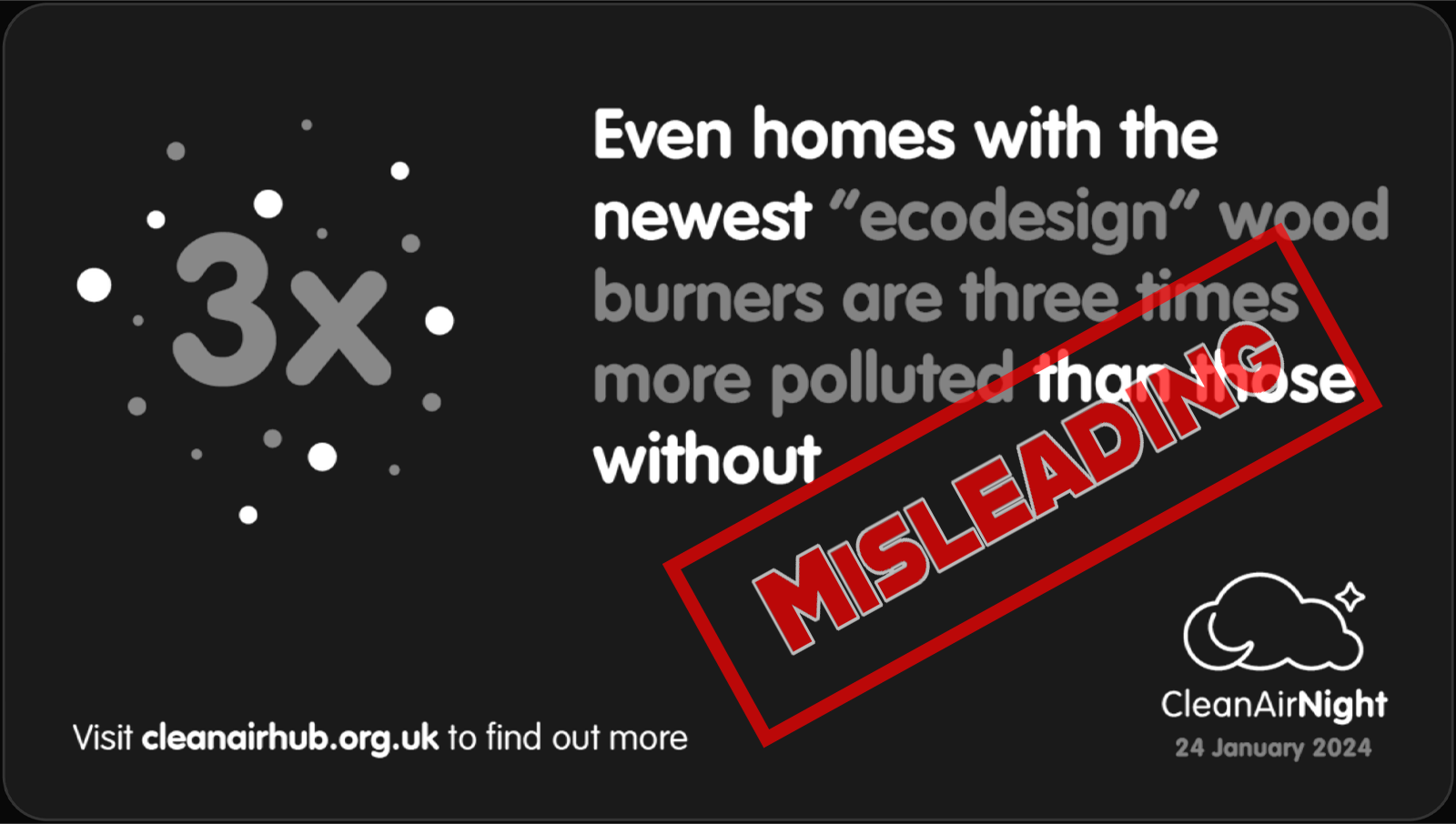
This is also totally misleading. We could draw on our sources, but more powerfully we can draw on the London Wood-Burning Project’s own report as a rebuttal to this one.
On page 71 of their 127-page report (5), we find the page titled Key Findings. Below are 3 crucial pieces of information from this page:
1/ Use of the clearSkies Level5 stove (which is Ecodesign compliant) demonstrated some benefits for indoor air quality. Indoor PM2.5 did not increase when adding fuel to the stove once lit… At times there was actually a decrease in indoor concentrations of PM2.5 when adding fuel.
As we have long pointed out, a properly functioning modern wood stove draws particulates out of the room and up the flue, helping improve air quality and ventilation in the home. The stove used in this study was our Charnwood C-Five.
2/ Increases in pollutant concentrations may be more affected by participant technique or specific airflow characteristics of an individual appliance, rather than to the type of appliance or fuel.
We always encourage best stove practices and will continue to do our level best to educate new and existing customers and beyond.
3/ However, the biggest increases in PM2.5 concentrations indoors did not relate to indoor wood or solid-fuel burning but instead were a result of cooking, especially frying, grilling and use of the oven, and particularly when the extraction fan was not used.
This really provides perspective on the issue of PM 2.5 in the home. A slice of burnt toast or your Sunday lunch can contribute far more than a wood-burning stove.
It’s a shame they don’t plaster these findings on a bus or large poster.
A lack of scientific rigour
Imprecise methodology
“The results were compared to modelled wood and solid-fuel burning emissions to identify areas where the measurements match well with predictions or where measurements may provide evidence of solid-fuel burning that were not predicted by the model.” (pg.9 of the LWBP report)
They do not sufficiently differentiate between the different sources of ‘solid fuel burning’. Data collection relies heavily on estimations and ambient air sampling, offering a blurry picture at best. Traffic, construction, industrial processes and even natural dust all contribute to PM2.5 and cannot reliably be controlled in their methodology.

Walking around with modified backpacks does not allow them to distinguish in any way what the source of PM2.5 is in a given area.
Small sample sizes & poor testing equipment
One of the major studies often cited, is by Rohit Chakraborty et al, and based on a sample size of just 19 homes that took measurements using, as they admit, “low-cost air quality monitors” (7)
Manipulated data
Data is also often twisted and cherry-picked to bolster a blinkered argument. For example, comparing the emission rates between wood stoves and HGVs has caused much unnecessary concern.
Closer inspection revealed their data excluded brake and engine wear and in fact, just one Euro 6 HGV produces 13 times more PM2.5 emissions than an Ecodesign wood-burning stove over the course of a week’s real-world use. Furthermore, emissions from HGVs are emitted at ground level (nearer head height) while wood smoke is dispersed more safely, higher up via a chimney flue.
The SIA say, “ The claims are based on simplistic calculations using permitted rates of emission and do not consider either real world use or non-exhaust emissions. Furthermore, these permitted emissions rates rely on vastly differing measurement protocols and techniques. It should also be noted that there are several unreferenced assumptions, and the report does not appear to have been independently peer reviewed.” (8)
Expert ‘opinion’
In the bottom left-hand corner of every page of the London Wood Burning Project report you can see the following disclaimer:
“This report is the independent expert opinion of the author(s)”
Firstly, anyone can claim to be an expert in whatever they like, however, the key word here is ‘opinion’.
Well, the SIA has commissioned extensive independent research which casts serious doubt on the estimations and ‘opinions’ provided by anti-woodburners (6). Experts question the methodologies and point out the lack of robust data used to support their dramatic claims.
We highly encourage you to read this report undertaken by Dr Amanda Lea-Langton, senior lecturer in Bioenergy Engineering at the University of Manchester:
https://stoveindustryalliance.com/wp-content/uploads/2022/04/22-04-11-Indoor-air-final-V5-AL.pdf
We have listed some of the key findings below:
-No scientific evidence found for adverse health impacts from exposure to the indoor air typically associated with modern, enclosed wood burning stoves
-No association shown between exposure to indoor wood burning and risk of asthma in developed countries
-Use of modern wood burning stoves may help to improve air quality inside the home due to the natural draught created during wood stove operation that pulls air from the room into the appliance and from outside
-Other sources of particulate matter in the home, such as cooking, can release much higher levels of PM compared to modern, enclosed wood burning stoves, and could therefore havegreater health risk potential
-In one study, oil-based cooking, such as frying food or grilling meat, had peak value PM concentrations significantly higher than the WHO recommended average 24hr exposure limit
-In the same study the Ecodesign wood burning stove indoor air quality averages during operation were below the WHO recommended limits
The official data (the truth) is good news!
And how about this for good news? The TRUTH is that UK PM 2.5 emissions have been steadily decreasing over the years despite record stove sales (please see the short video above). This is data taken directly from DEFRA and is a scientific and unbiased representation of the air quality in the UK. Whilst there is more we can all do, the evidence is resoundingly positive.
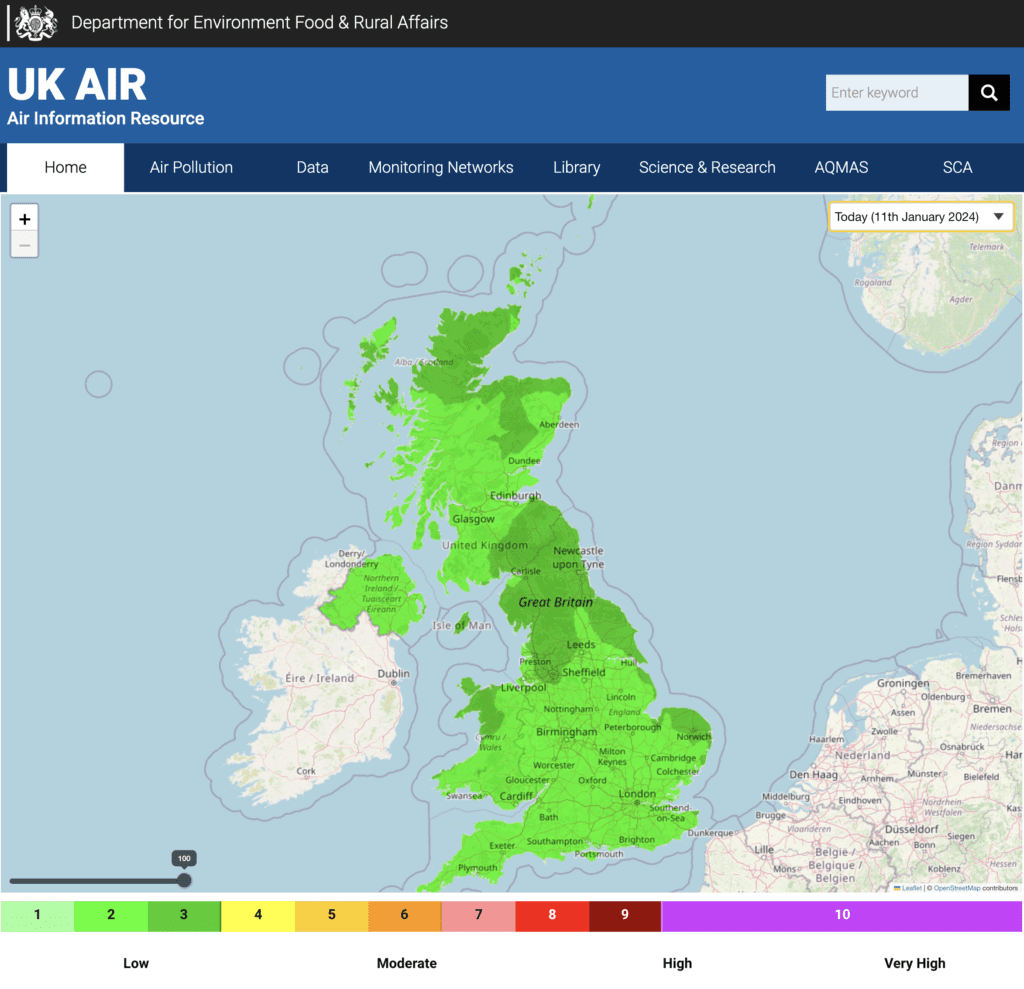
At the time of writing (11/01/2024) on a very cold winter’s day when wood stove usage would typically be higher, here is the PM2.5 picture for the UK taken, once again, from DEFRA’s official website.
https://uk-air.defra.gov.uk/forecasting/
So, when the anti-woodburners say 17% of emissions. It is 17% of a very low amount in the first place. Then, remember modern wood-burning stoves are just 1-2% of that low amount.
Modern stoves equal lower emissions with HUGE benefits
Next time you encounter someone who questions the benefits of modern wood-burning stoves, here is a list you can reel off!
1/ They can produce heat for sustained periods and are unaffected by external factors such as the weather.
2/ Allowing them to work in conjunction with wind, solar and other green heating solutions. A stove makes these great technologies more viable – They are not in competition with each other.
3/ A wood-burning stove is an ideal emergency/low-frequency heat source.
4/ Wood is a carbon-neutral fuel as it gives off the same amount of carbon whether it is burnt or decays naturally. The carbon released from burning wood is balanced out by the carbon absorbed by the tree during its lifetime.
5/ Wood fuel can be sourced locally without fracking and deep-sea oil drilling.
6/ A good quality stove can last many decades and provide an affordable source of heat for low-income households.
7/ The right to repair. The majority of components used within a Charnwood stove are modular and can be replaced when or if they wear out further extending the life of your stove.
8/ Charnwood stoves and packaging are fully recyclable.
9/ There are significant well-being benefits from using a wood-burning stove. Read about the Charnwood wellbeing survey and all the amazing benefits of owning a stove for your wellbeing.
Building a Collaborative Path Forward
The wood-burning stove community’s voice in this debate isn’t just about defending an industry; it’s about ensuring a fair and balanced path towards a cleaner and more energy-secure future. Targeting outdated appliances, promoting responsible practices, and encouraging sustainable forestry practices would yield far greater results for all.
Modern wood-burning stoves offer many benefits beyond warmth. They provide energy independence, encourage mental wellbeing, support rural communities, and help foster sustainable forestry practices. Responsible utilisation of modern wood-burning stoves can absolutely coexist with clean air initiatives, without compromising the environment.
We are passionate about building on our 50 years of experience leading developments in the industry and producing the most efficient stoves on the market. We understand why people want to reduce PM2.5 emissions even further and we support doing more to achieve this. That is precisely why we continue to invest significantly in technological advances rather than sensationalist marketing campaigns.
Thank you for reading and please share if this has resonated with you.
_____________
Further reading:
Here is a link to an article which explains why modern wood-burning stoves will continue to be an essential heating solution long into the future. Wood-Burning Stove’s Co-Heating Future (A Nuanced Look At PM 2.5 Emissions)
References:
(3)https://www.clearskiesmark.org/about-us/certification-system-explained/
(4)https://www.gov.uk/government/publications/summary-results-of-the-domestic-wood-use-survey
(6)https://stoveindustryalliance.com/wp-content/uploads/2022/04/22-04-11-Indoor-air-final-V5-AL.pdf
(7)https://www.mdpi.com/2073-4433/11/12/1326/html
(8)https://stoveindustryalliance.com/sia-responds-to-wood-burning-stove-and-hgv-emission-comparison/

